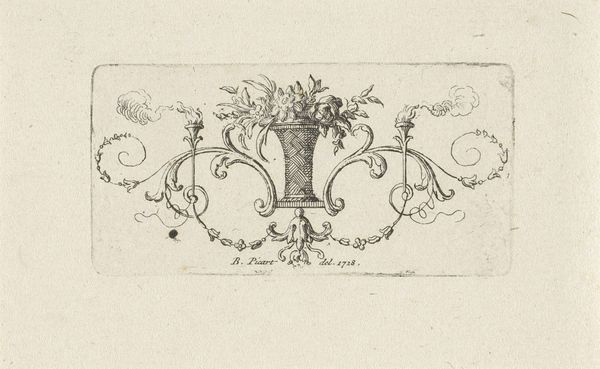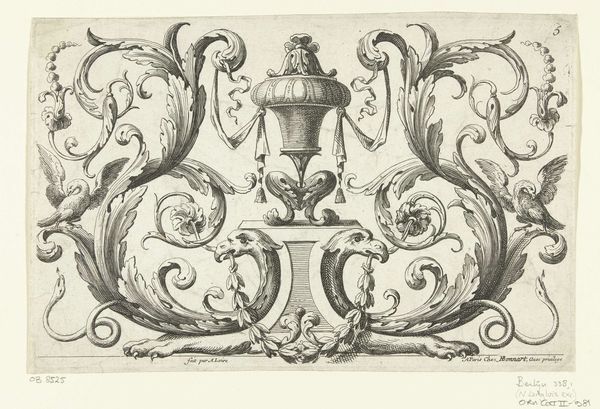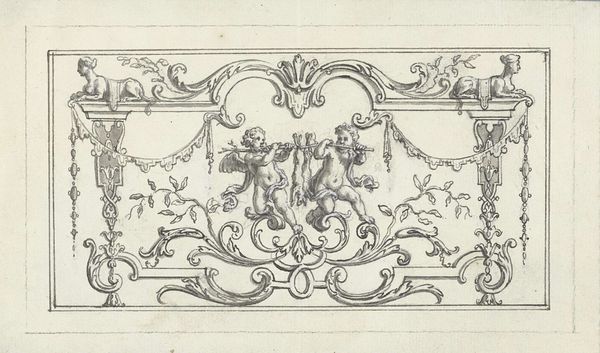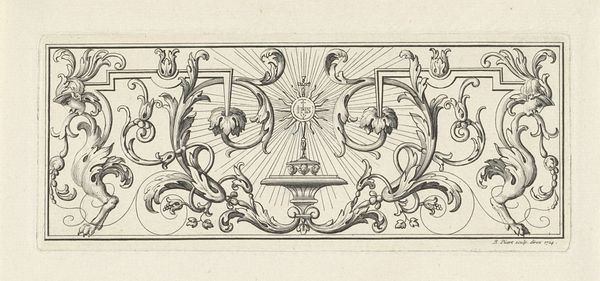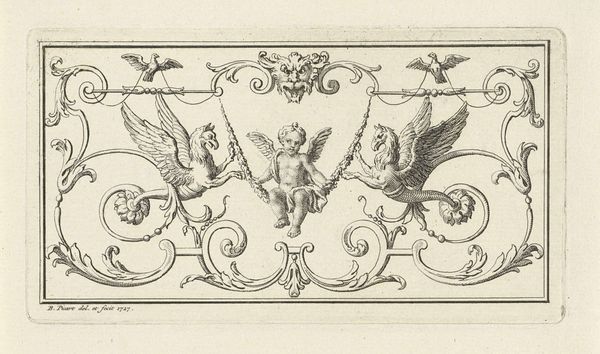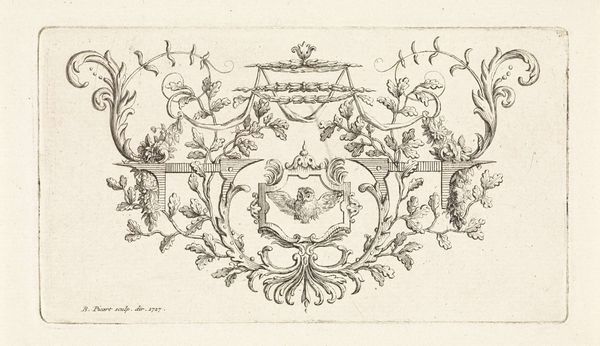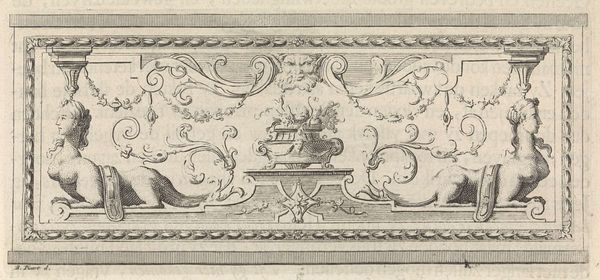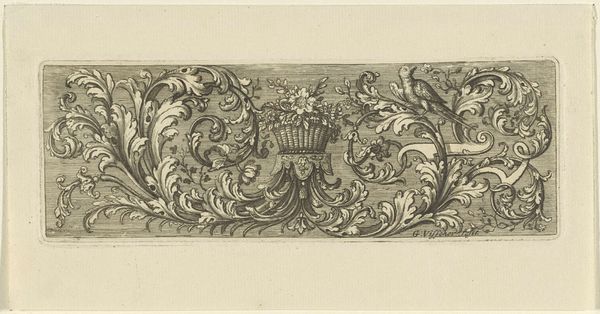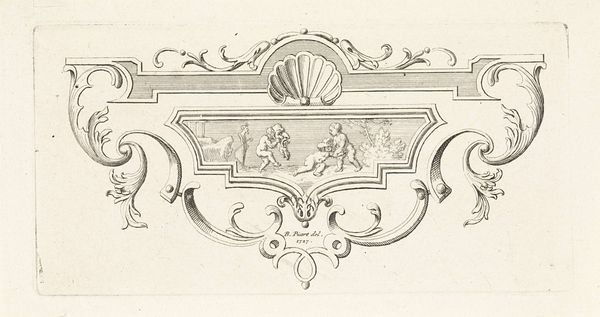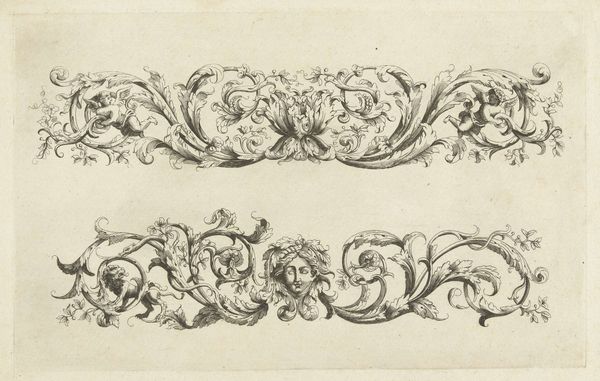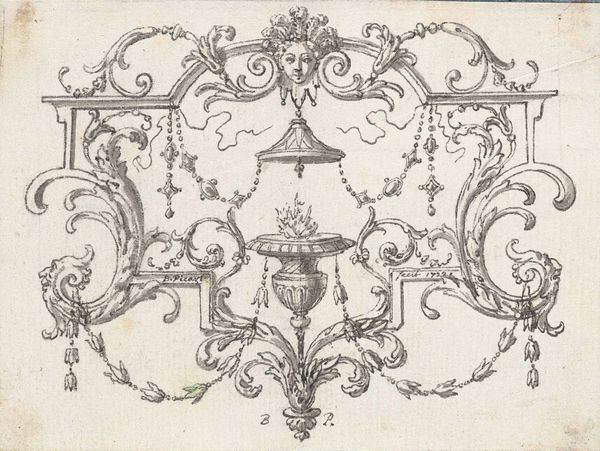
drawing, ornament, engraving
#
drawing
#
ornament
#
baroque
#
pen illustration
#
figuration
#
engraving
Dimensions: height 74 mm, width 134 mm
Copyright: Rijks Museum: Open Domain
Curator: This delightful 1727 drawing by Bernard Picart, titled "Ornament met tuinvaas en putti met vogeltjes," features an elaborate, symmetrical design centered around a garden vase. What strikes you first about this engraving? Editor: The overall delicacy. The etching creates such fine lines; it looks incredibly intricate and precious. Almost too ornamental, like over-icing a cake. How would you place it within the art history of its time? Curator: Given its date, this aligns neatly with the late Baroque. We can consider how these ornamental designs speak to a particular worldview. The symmetry, the putti— these are classic signifiers of power, wealth, and a desire for harmony in a world increasingly aware of its own instabilities. This kind of luxury good often represented very exclusive social circles and tastes. Editor: That makes sense. When I focus on the materiality, it is important to note that creating engravings for luxury goods became quite a prominent job in 18th-century Europe. These detailed designs would have served as guides for artisans, essentially providing the blueprints for executing elaborate ornamentation on furniture or other decorative objects. It raises interesting questions around authorship, craft and utility, doesn’t it? Who truly produced this "art"? Curator: Indeed, who benefits from the work of whose hands? We also have to recognize how the Baroque obsession with ornamentation often obscured realities of labor. It can become difficult to consider the context beyond European courts. Editor: These concerns with ornamentation might represent cultural anxieties about production under an increasingly rigid class structure, with these engravings mediating what labor really is. But, what do you find compelling, even likeable about Picart’s baroque fantasies here? Curator: Despite my critical lens, I appreciate the artwork’s aspirations. I see these ornaments as an early expression of our longing to imagine beauty even while laboring within rigid constraints. Picart’s vase is just a vase, yet symbolizes much more about longing to envision harmonious surroundings in the face of discordance. Editor: It's almost sad in a way. Well, looking at it with both our views provides some extra, exciting texture to it! Thanks. Curator: My pleasure! It is the convergence of technique and ideology that makes this period continually interesting.
Comments
No comments
Be the first to comment and join the conversation on the ultimate creative platform.
